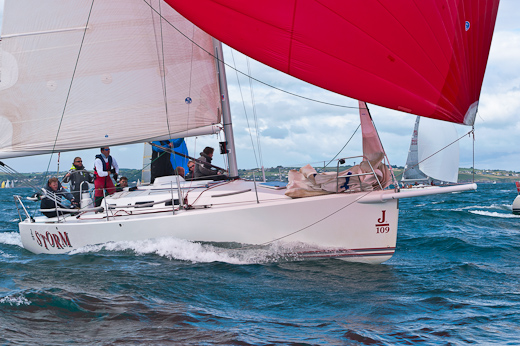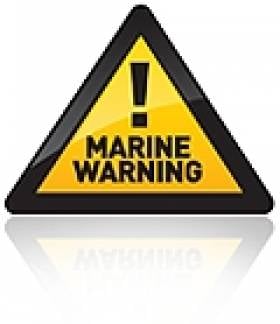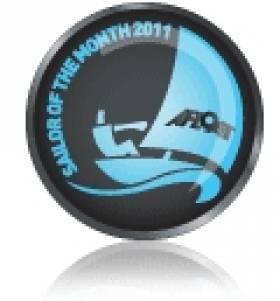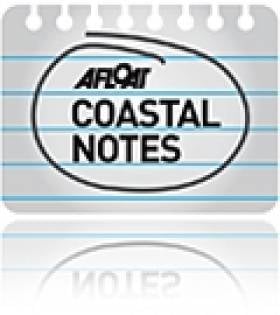Displaying items by tag: Rush
Marine Notice: Hydrographic Survey in Irish Sea
#MARINE WARNING - The latest Marine Notice from the DTTAS advises all seafarers in the Irish Sea between north Dublin and north Wales to give a wide berth to the hydrographic and oceanographic survey operation in the area this week.
The SV Bibby Tethra (callsign 2EGF8) commenced survey operations yesterday (Monday 16 January) from offshore at North Beach in Rush to approximately 16 miles offshore north of Anglesey. The survey is scheduled for seven days, subject to weather delays.
The vessel will operate on a 24-hour basis, displaying appropriate day shapes and lights during survey operations, and will transmit an AIS signal. The vessel will be keeping a listening watch on VHF Channel 16 at all times during the operations.
Survey operations will involve towing survey equipment up to 100m astern of the vessel along pre-defined survey lines, which will restrict the vessel’s ability to manoeuvre.
Details of the survey area are included in a PDF of Marine Notice No 2 of 2012, which is available to read or download HERE.
Health Minister Speaks Out Against Fingal Sewerage 'Super Plant'
#NEWS UPDATE - The Minister for Health has raised concerns over a new water treatment 'super plant' planned for Fingal, amid fears that a malfunction could see huge amounts of raw sewerage pumped into the Irish Sea.
As reported in The Irish Times, Dr James Reilly echoed worries expressed by his north Dublin constituents and members of community group Reclaim Fingal Alliance, noting that the people of Skerries, Loughshinny and Rush are particularly "worried about the effects of the outfall pipe in their area".
The minister said that none of the nine sites being considered by Fingal County Council and Greater Dublin Drainage was suitable for sewerage treatment, and that any waste should be treated to "advanced levels" to make the outfall as clean as possible, thereby avoiding adverse impact on shellfish beds.
As many as 10,000 letters of objection have been lodged against the plan by campaigners including local farmers and environmentalists.
The Irish Times has more on the story HERE.
Pat Kelly is Afloat's Sailor of the Month for November
#SAILOR OF THE MONTH – Pat Kelly of Rush Sailing Club is the Afloat.ie/Irish Independent "Sailor of the Month" for November after his J/109 Storm - crewed by fellow-Fingallions - was celebrated as the Irish Cruiser Racer Association "Boat of the Year" at the ICRA annual general meeting in Dun Laoghaire at the weekend.
The sailors of north Fingal are on a roll these days. Back in September, Matt Davis of Skerries won our monthly award after his Sigma 400 Raging Bull retained the Irish Sea offshore championship. And another Skerries sailor, windsurfer Oisin van Gelderen, continues to be Ireland's fastest man afloat, his current official best speed being 44.23 knots.
Now it's the turn of Rush to top the podium. Not that Rush is new to successful sailing. Once upon a time, it was the top port on the east coast of Ireland for smugglers who veered into privateering and occasionally even piracy. To succeed in any of these activities, they needed fast ships and able skippers, and captains like Luke Ryan and James Mathews gave Rush its formidable sailing reputation.


Storm was made ICRA Boat of the year last weekend and this Saturday her skipper Pat Kelly becomes Sailor of the month for November. Photos: Bob Bateman
Highlight of Pat Kelly's season with Storm was his outright class win in the ICRA Nationals at Crosshaven. Five wins in six races is the sort of performance that would get the Luke Ryan/James Mathews seal of approval. Storm was also regularly in the frame in many other major events, and had frequent success in regattas and club racing with a dedication to sailing that does her skipper and crew proud.
Pat kept his previous 30-footer in the tide-riven anchorage at Rogerstown off Rush SC's attractive south-facing clubhouse, one of the few south-facing sailing clubhouses in the entire country. However, with the bigger boat it was necessary to find a berth at Howth, and in fact Storm sails as a joint HYC/RSC entry. But the club in Howth wouldn't begrudge this success to their smaller neighbours to the north. And with their own marina in fine shape (it hosts next year's ICRA Nationals in late May), they'd be the first to agree that the only thing holding back north Fingal sailing from even greater achievements is the lack of sheltered and conveniently accessible pontoon berthing on the entire coast between Malahide and Carlingford Lough.
More from WM Nixon in the Irish Independent here
Rush Hosts Annual Blessing of the Boats
The annual Blessing of the Boats took place recently at Rush Sailing Club, the North County Leader reports.
Local priest Fr Kieran Coughlan conducted the ceremony, which took place away from the boats this year due to particularly blustery conditions on the day.
Fr Coughlan also led the large gathering in paying tribute to Skerries fishermen Ronan Browne and David Gilsenan, who lost their lives last month.
The North County Leader has more on the story HERE.
Sailing Body Elects First Female President
In one of her last official functions as Minister for Sport, outgoing local TD Mary Hanafin attended the Irish Sailing Association's annual Ball last Saturday in the Royal Marine Hotel in Dun Laoghaire.
Attended by 315 people the black tie ball featured an awards ceremony that has been hailed 'a great success' by the association.
On Saturday afternoon the association elected a new President, Niamh McCutcheon, the first female ISA President since the organisation was founded in 1945.
A collection in aid of the RNLI raised over €2,250.
Award details below:
ISA Sailing Achievement of the Year
This award is presented by the ISA to recognise the outstanding achievement in a sailing craft by an Irish person or in Ireland during 2010.
Winner: Nicholas 'Nin' O'Leary, Royal Cork Yacht Club
Nicholas' achievements included narrowly beating his father Anthony at the ISA All Ireland Championships in 2010 by just a single point after a nail-biting finale in difficult conditions off Kinsale in November. The win made it three-in-a-row for this remarkable young 24 year old sailor - the only person to achieve this in the 64 years of the event's history.
ISA Volunteer of the Year
This award is given to a member of an ISA affiliated club or class who has made a significant voluntary contribution to their sport during 2010.
Winner: Brian Craig, Royal St. George Yacht Club.
Brian has been nominated by the Royal St. George Yacht Club for the vital role he has played in developing sailing in Ireland and specifically Dun Laoghaire over the past 40 years. His most recent success was winning the bid for Dun Laoghaire to host the 2012 ISAF Youth Worlds.
ISA Youth Sailor of the Year
This award is presented by the ISA to recognise the outstanding achievement by a sailor competing in ISA Performance Pathway boats during 2010.
Winner: Finn Lynch, Blessington Sailing Club
Placing 2nd overall at the Topper World Championships in 2010 left the Carlow sailor in good stead for a Youth Sailor nomination. A determined sailor and strong character, it's clear that with these strengths Finn has the potential to go far in our sport.
ISA Instructor of the Year
This award recognises the role instructors have in providing access to our sports. The final 5 have been nominated by their students with the ultimate winner selected by an ISA judging panel.
Winner: Aine Carroll, Rush Sailing Club
Aine has been an ISA instructor for the last 11 years, instructing both adult and junior sailors in Rush Sailing Club. A keen Mermaid sailor, her love of sailing, her enthusiasm for the sport and willingness to give her time to her sailors have been infectious and remarkable. Apparently the kids at the club think she is a 'legend' and 'cool'!
ISA Training Centre of the Year
The face of ISA water sports to thousands of participants. The best in 2010 as nominated by their students.
Winner: University of Limerick Activity Centre
Situated on the sheltered shores of Lough Derg, University of Limerick Activity Centre has been in operation for over a decade. ULAC provides a varied programme of adventure activities to the general public. The University of Limerick Activity Centre runs ISA courses in sailing dinghies, windsurfers, powerboat as well as emergency care training courses.
Rush Sailing Club

L'Aberwrac'h Light house. Image courtesy of Rush Sailing Club Photo Gallery
Rush Sailing Club was founded in 1954 by a group of local enthusiasts with no facilities and less money. Nonetheless, several of them built their own Dublin Bay Mermaids. Designed in 1933, a fleet of these beautiful clinker-built 17-foot dinghies are still the mainstay of racing in the club over fifty years later.
Since those early days, the club has developed beyond recognition, with a fine clubhouse, yard, private slipway and fenced and serviced boat park.
In addition to the Mermaids, there are now a substantial fleets of cruisers and motor boats moored in the estuary, an active Junior section sailing Optimist, Pico and Feva dinghies, and members involved in a wide range of water sports, from fishing to kayaking and diving. Courses are also organised for adult beginners and for developing more advanced skills.
New members are always welcome. The Club Bar is open to members on Wednesday, Friday, Saturday and Sunday evenings. The clubhouse is also available for private hire for functions. For bookings, contact Marguerite Carthy, 087 253 7860.
Rush Sailing Club, Linkside, Rogerstown, Co Dublin. Tel: 01 843 0695, email: [email protected]


































































